Noiser
Easter Island: A History of Rapa Nui
Play Short History Of... Easter Island
Easter Island is perhaps best known for the giant statues that mark its landscape. But what inspired ancient settlers to populate a remote island in the South Pacific with these mysterious stone monoliths?
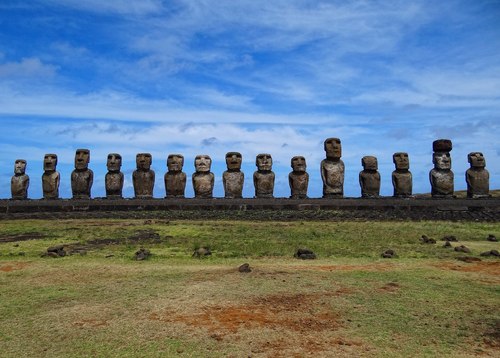
Where is Easter Island?
Easter Island, known locally as Rapa Nui, is one of the most isolated inhabited islands on Earth. Located in the southeastern Pacific Ocean, it is approximately 2,300 miles from Chile's coast.
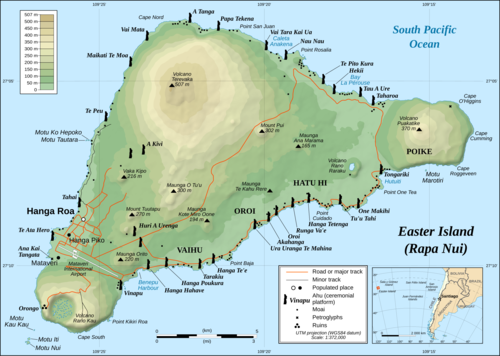
Easter Island, known locally as Rapa Nui, is one of the most isolated inhabited islands on Earth. Located in the southeastern Pacific Ocean, it is approximately 2,300 miles from Chile's coast.
Polynesian explorers first set foot on the tropical island around 800 AD. Finding the island was a remarkable achievement, especially considering they had no navigation devices and were searching for a scrap of habitable land spotted on a previous expedition in an ocean that spans over sixty million square miles. Still, when their ships washed up safely on Rapa Nui’s golden beaches, it was clear the death-defying journey was worth it.
The island would have been lushly forested and teeming with birds and fish. What they found was a literal paradise.
Dr Jo Anne Van Tilburg, archaeologist and the Director of the Easter Island Statue Project
What is the purpose of the statues?
In Polynesian culture, carving was an honoured profession, as evidenced by the 1,043 statues on the island. Known as moai, the statues are commonly referred to around the world as “Easter Island Heads." However, they have torsos, too, though most are buried beneath layers of earth. Carved by the Rapa Nui people between 1400 and 1650 AD, the largest of the moai stands over 30 feet tall and weighs an estimated 82 tonnes.
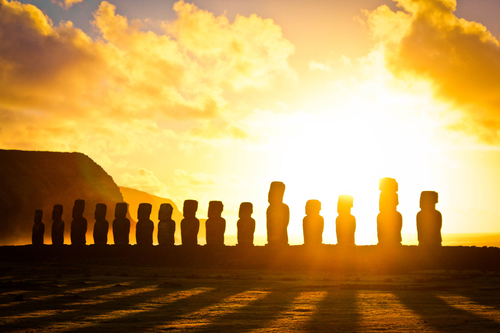
The moai were primarily carved from soft volcanic rock, known as tuff. The soft, easily manipulated tuff proved ideal for carving, especially given that the ancient Rapa Nui people worked only with stone tools called toki. Scientists believe they've identified the location of the ancient Rapa Nui "factory" where the figures were built, thanks to a series of unfinished statues near a volcanic crater called Rano Raraku.
The statues are widely believed to have been created to honour ancestors, chiefs, or other important figures in Rapa Nui society. Since they were built as a tribute to someone and often served as a burial site, the appearance of each statue is different, crafted to look like the person it honours.
The Arrival of Europeans
The Rapa Nui people were left alone until Dutch explorers set foot on the island on Easter Sunday, 1722. They decided to rename the island in honour of their arrival date. However, their first glimpse of the island was a far cry from the view that welcomed the first Polynesian settlers centuries earlier. Instead of a tropical paradise, the Dutch saw a dusty, deforested landscape. Some of the moai statues that had stood so majestically for centuries now lay abandoned on the ground, slowly eroding.
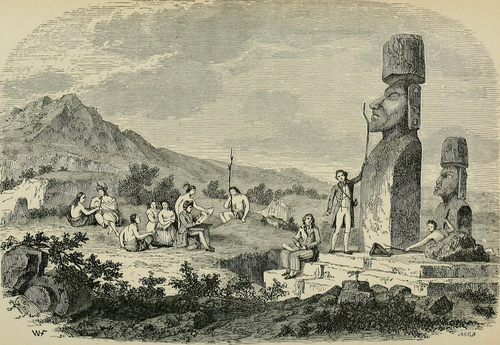 Unimpressed, the Dutch didn’t stick around, and it was almost fifty years before another European ship stopped at the island. In 1770, the British explorer James Cook visited for a few days. Extracts from his logbook paint a sad picture. Though he described plantations of potatoes, plantains, and sugar cane, he described the island as ‘barren and without wood’. He saw few animals or birds and claimed the people lived in ‘low, miserable huts.’ Cook's bleak observations hinted at the island's decline, foreshadowing the environmental and cultural challenges that would continue to shape Easter Island's history.
Unimpressed, the Dutch didn’t stick around, and it was almost fifty years before another European ship stopped at the island. In 1770, the British explorer James Cook visited for a few days. Extracts from his logbook paint a sad picture. Though he described plantations of potatoes, plantains, and sugar cane, he described the island as ‘barren and without wood’. He saw few animals or birds and claimed the people lived in ‘low, miserable huts.’ Cook's bleak observations hinted at the island's decline, foreshadowing the environmental and cultural challenges that would continue to shape Easter Island's history.
The Downfall of the Rapa Nui People
The islanders’ contact with outsiders soon took a darker turn.
In December 1862, slave raiders struck from Peru, capturing between 1,500 and 2,000 people (approximately half of the Rapa Nui population). Following public outcry, the Peruvian government granted freedom to some islanders, but when they returned to Easter Island, they brought smallpox back with them. The epidemic that followed wiped out much of the population.
Shortly afterwards, Eugène Eyraud, the first Christian missionary, arrived. Mass conversions of the islanders began in 1866, and within two years, almost the entire population was Roman Catholic. But disease struck again. A tuberculosis epidemic killed a quarter of the remaining population, leaving fewer than 1000 native people alive. In 1888, the island was officially annexed by Chile, its geographical neighbour. Whether they liked it or not, the Rapa Nui people became Chilean citizens, ending their thousand-year independence.
Tourism and Resurgence
In 1915, a British citizen, Katherine Routledge, landed on Rapa Nui. Supported by the British Museum and the Royal Geographical Society, and with the help of an islander named Juan Tepano, she made detailed records of the Moai statues and excavated more than 30 of them.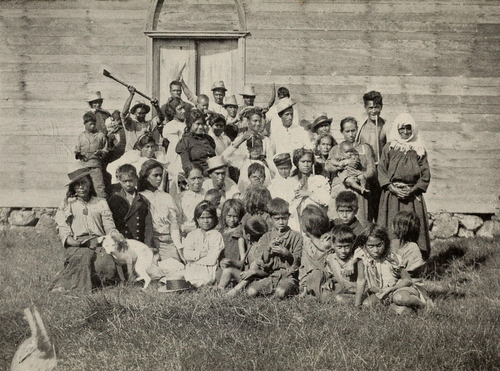
Katherine also interviewed those who remained on the island. In 1919, she published an account of her stay in a book called The Mystery of Easter Island. It proved popular, capturing the public’s imagination, but few tourists could visit due to a lack of transport. This changed in 1967 with the advent of weekly flights from Santiago, Chile. Hotels and infrastructure soon sprang up across Rapa Nui to cope with the influx of visitors.
In 1995, UNESCO named Easter Island a World Heritage Site, marking it as a place of "cultural and natural heritage of outstanding value to humanity."
Easter Island’s popularity continues to grow. The island now receives 14 flights a week and 156,000 annual visitors. The local population stands at around 7,500, though fewer than half are native Rapa Nui people. It is estimated that 75% of the population works in tourism, an industry that generates around $120 million every year.
However, this tourism boom has raised concerns among the Rapa Nui people about its impact on their fragile ecosystem and cultural heritage. Many advocate for greater autonomy from Chile, seeking more control over their land, resources, and the tourism industry.
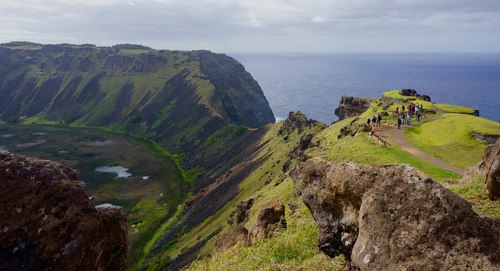 Despite the passage of centuries and the numerous changes the island has experienced, most of the moai remain. These giant stone figures stood vigil as the landscape changed, as the explorers, raiders, and slave traders came and went, and as a great community rose, fell, and rose again.
Despite the passage of centuries and the numerous changes the island has experienced, most of the moai remain. These giant stone figures stood vigil as the landscape changed, as the explorers, raiders, and slave traders came and went, and as a great community rose, fell, and rose again.